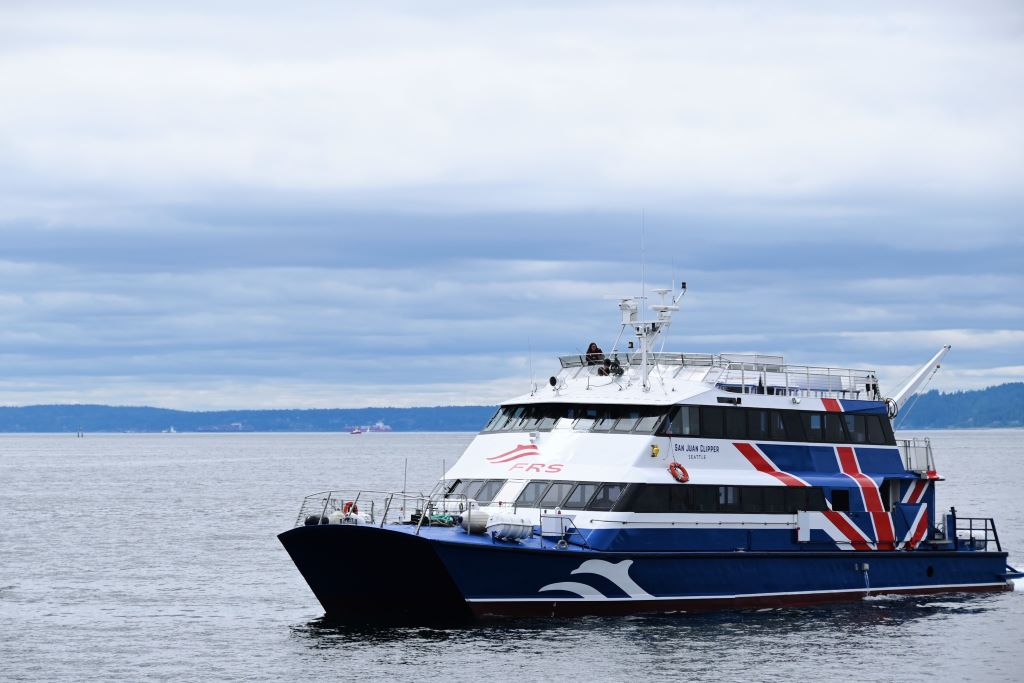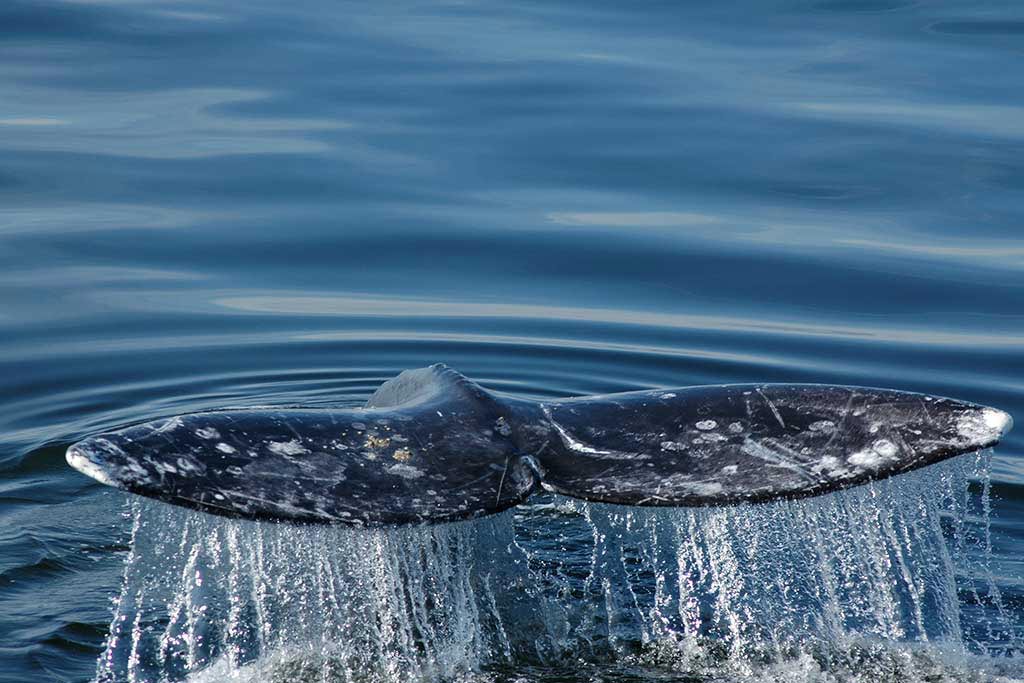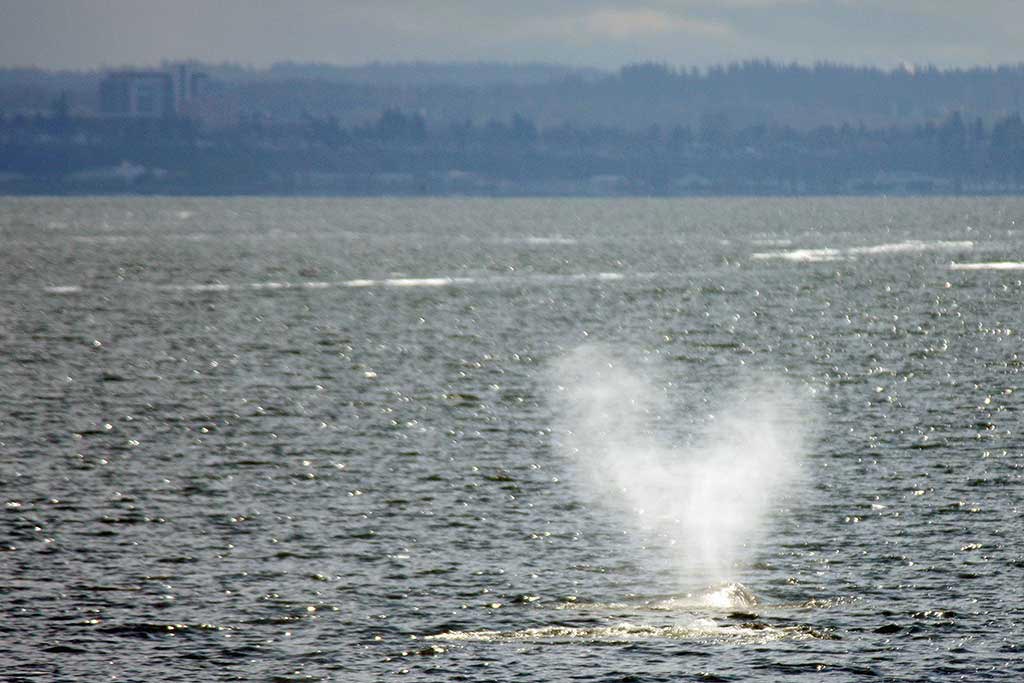It’s a classic Pacific Northwest morning as we hop onboard the San Juan Clipper for our Seattle Wildlife and Gray Whale Watching Tour. The crew happily welcomes passengers back as we gear up for another exciting whale watching season in the Salish Sea. Spring has arrived and the celebrated North Puget Sound gray whales are back, returning once again to make a pit stop in our waters along their 5,000+ mile journey from Mexico to Alaska.
Book Now: Save 25% on your Seattle Wildlife and Whale Watching Tour
Knowing the gray whales’ time in the Pacific Northwest is limited during their March-April migration through the region, we eagerly block out time on our calendar to welcome back these fascinating mammals. After all, it’s not very often a 50-foot-long mammal weighing up to 35 tons (the equivalent of five adult male African elephants) takes up residence in your own backyard.
11:00AM – Setting Out through the Salish Sea
As we get settled in and fuel up for an action-packed day, our San Juan Clipper whale watching vessel eases out of downtown Seattle’s Pier 69. Anticipating a busy day ahead observing the majestic creatures, let the adventure begin!

Passing by neighboring towns and islands along the shoreline, we keep our eyes closely peeled on the water as our expert naturalist gives provides inside tips for spotting these long-haul travelers. We are looking for robust mottled grey bodies marked with barnacles and yellow patches of Cyamidae, a crustacean that lives on gray whales.

Cruising through the Sound, our onboard naturalist grabs her pair of trusty binoculars. Slowly scanning the water’s ahead, she looks for our local visitors. Somewhere below the chilly blue water, 10-12 gray whales dine on populations of ghost shrimp at the south end of Camano and Whidbey Islands. The whales are frequently seen close to land, feeding along the shallow, muddy shorelines where those tasty shrimp and worms are found.
Spotting our Seattle Celebrities
“Off the port side, at 10 o’clock, we have two gray whales!” our expert onboard naturalist shouts exuberantly. With breathless anticipation, we scan the water trying to spot the gigantic mottled gray creatures and hopefully even grab a photo or two.

Silence is broken by a loud “whoosh” as the massive, 10-foot-long tail fluke of a gray whale is lifted out of the water. A few seconds later, the powerful tail crashes against the water with a sharp, resounding “flap!” as the mighty beast propels itself deep beneath the water. It’s time to feed as it fills its large mouth with mud from the sea bottom that it then filters through its baleen.

Mission accomplished! With a gray sighting under our belts, we navigate onward in search of a second opportunity to see these magnificent mammals. Our naturalist maintains a close eye on the waters while providing a detailed explanation of the gray whale species and their behavioral patterns, as we continue on through the Salish Sea.

She mentions another good way to spot the whales is to look for a heart shaped misty jet of vapor of the whale’s blow when they come to the surface. Using her tips, we continue to search the horizon, as we head back.
2:00 PM – Cruising Back to Seattle
As we settle in for the ride home, we kick back and relax in our comfy leather seats. As the sleek San Juan Clipper catamaran slices through the waters, bald eagles circle right over our boat and we catch sight of a harbor seal snacking on a dogfish. We slow down as we pass by a navigational marker where sea lions are hauled out of the water, basking in the sun. Later I pull out my camera and browse through my pics, especially the ones of the barnacle-nosed gray whales, reflecting on the day’s spectacular adventures and the new wealth of knowledge I acquired about whales and sealife across the Salish Sea.
What do I bring whale watching?
Temperatures are usually cooler on the water (especially during spring in the Pacific Northwest!), so it is important you have the right gear! Make sure to dress with extra layers and visit our packing guide to ensure your whale watching adventure is spectacular.
When is the best time to go whale watching in Seattle?
The best time of year to spot gray whales on our waters is from March-April. For Orca, Humpback, and Minke whales, the best time is from May-October.
2 Comments
Comments are closed.


Are you ADA complient? Bathrooms as well?
Hi Mary,
Thanks for reaching out. Yes, the San Juan Clipper is ADA compliant. We provide wheelchair accessibility onboard the vessel, as well as assistance in Langley via small motorized carts (there is a small hill to get up to town, and the incline may be steep for some). Our vessel has one wheelchair accessible bathroom onboard. For more information, please check out our Whale Watching FAQ or let me know if you have any other questions I can help with.
Cheers,
Brenna